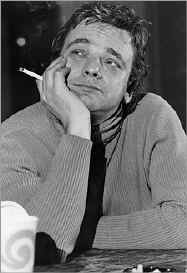There's a cruel reality in the music world; there is no way of knowing what work the public will latch onto and claim as Most Beloved Piece, and it is often the last piece of music the artist/composer would think (or wish). From Bruce Springsteen's "Born In the USA" turning from countercultural protest song to the unironic anthem of red-blooded "Real 'Murrikans" to Chumbawamba, a British anarchist band (no kidding. You can't make this stuff up) being known for their frat-boy drinking song "Tubthumping," there is no telling what music will stick in the minds of listeners. Such is the case of Wolfgang Amadé Mozart's Serenade #13 in G, a title that means nothing to anyone until the subtitle is added - "Eine Kleine Nachtmusik".
 |
| Baby Mozart, composin' like a boss. |
It was around this point that Wolfgang reached the point that all child stars reach eventually; the end of childhood. Mozart spent several years employed as a court musician in Salzburg, but did not enjoy his time there - among other things, he did not appreciate his treatment there (potentially an echo of being too used to his childhood fame). To further dampen his early adulthood, in 1778, his mother fell ill and died while Mozart was in Paris. Around this time, Wolfgang finally began to distance himself from his father's wishes (though, as far as we know, he did not shave his head and invite the paparazzi to watch the spectacle, though given the 18th century's propensity for wig-wearing, all sorts of shenanigans could have occurred...) and in 1781, he had a large argument with his employer, Archbishop Colloredo, and decided to pursue a freelance career in Vienna.
 |
| Don't tell Stephen Sondheim, though... |
Eine Kleine Nachtmusik is an orchestral serenade, or a work for instrumental ensemble that is mainly for entertainment (and thus is more lighthearted than other instrumental works, such as symphonies, can be). The word "nachtmusik" is actually a bit of a misnomer, or as they say in French, a "faux ami" (or false friend). Translated literally, it means 'night music,' which is how it is generally translated; however, the word itself actually just means 'serenade.'
It is in four movements, with each movement being rather well-known. Of course, it is the first movement, with its delightful example of a Mannheim Rocket in its first two measures, that is the most famous.
"What's a Mannheim Rocket, and what on earth is it doing in the 18th century?" you may ask. Well, let me tell you.
 |
| Pictured: Five 20th-century Mannheim rockets, courtesy of SuperStock.com |
Further listening:
Like Mozart, and also breathtakingly beautiful music? Try "Soave sia il vento" from Cosi fan tutte (recorded at the 2006 Glyndebourne festival): http://www.youtube.com/watch?v=6Wi7UsXW1As
Like Mozart, and also copious amounts of silliness? Try "Clarice cara mia sposa", an aria for tenor (sung by Marcel Reijans): http://www.youtube.com/watch?v=kz45Vtjfbpk
Like seeing what other pieces can be overlaid on top of Eine Kleine Nachtmusik? Try "Eine Kleine Nichtmusik" by P. D. Q. Bach: http://www.youtube.com/watch?v=enT9oAE0TxM&feature=related
No comments:
Post a Comment